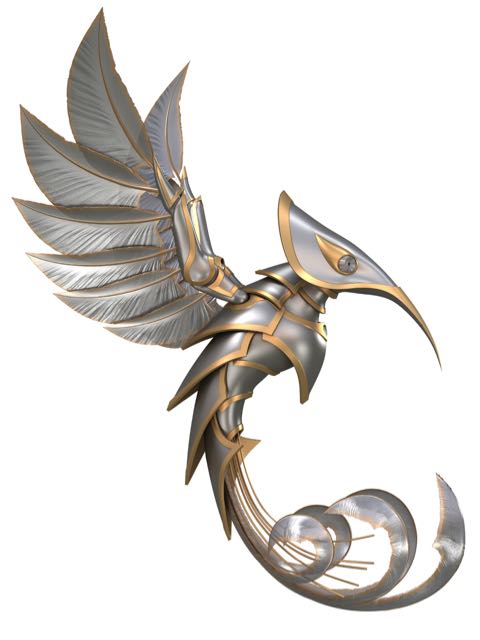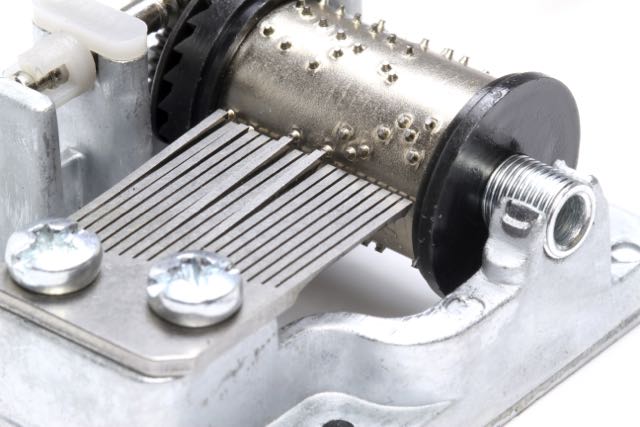A magazine where the digital world meets the real world.
On the web
- Home
- Browse by date
- Browse by topic
- Enter the maze
- Follow our blog
- Follow us on Twitter
- Resources for teachers
- Subscribe
In print
What is cs4fn?
- About us
- Contact us
- Partners
- Privacy and cookies
- Copyright and contributions
- Links to other fun sites
- Complete our questionnaire, give us feedback
Search:
Robot Birds: Computing History
by Paul Curzon, Queen Mary University of London

Creating Artificial Life has been an obsession of humans for centuries, culminating in today's robots. The aim has been to create creatures so life-like you cannot tell the difference between them and real life. One day we may create machines that we accept really are a form of life, so that switching them off would be considered murder. Music and birds have featured from the start.
The early machines aiming to be life-like started as toys for royalty. Most were just that: toys. The master of it all was Jacques de Vaucanson in the 17th century. He created something much more than a toy. He was interested in understanding how the human body worked, so made automaton that aimed to work the way that real life worked: an early example of modelling as a way to better understand. The modern equivalent of this is computational modelling where scientists create computer models of some phenomena they are trying to understand. If the model behaves the way the original does then it increases confidence that the theory on which it is based is correct. With Vaucanson's automata that phenomenon was life itself.
Playing the flute
Vaucanson's first automata, made in 1827 when he was only 18, was a flute player. His aim was to replicate the way a human played the flute, so he created artificial lungs from bellows, gave it a windpipe and valve tongue as well as lips and fingers that moved. Each was intended to play the role of that in a human flute player, so that it was actually playing a real flute the way a human would. The Flute Player stunned audiences across Europe. Many people thought it was trickery, with the sounds coming from some other contraption in its body, but an inspection by members of the French Academy of Science proved it really was playing the flute itself.
Duck digestion
A later automata he made that was just as stunning was a duck that made life-like duck movements, flapping its wings and quacking. The sound wasn't the point this time though. The duck drank water, ate grain from a person's hand, digested it and supposedly pooed out the results. It was Vaucanson's attempt to understand the digestive system. The excretion part was a trick though - it had a hidden compartment of artificial duck poo, so what went in wasn't actually what came out.
The mechanical loom
Vaucanson quickly got bored of making automata so turned to other mechanical pursuits that ultimately laid the foundation for the computer age itself. He designed a fully mechanical loom in 1745. His aim was to help the French Weaving industry catch up with the British. Unfortunately, French weavers just saw it as a threat to their livelihood and supposedly pelted him with stones. The loom was never taken up. However the ideas, and in particular that of using punch cards, which built on earlier ideas of Basile Bouchon, were perfected half a century later by Joseph Jacquard. His Jacquard Loom is widely credited as being the inspiration for Charles Babbage when he was designing the first computer. Ada Lovelace who worked with Babbage took a tour of factories to learn about machines and see a Jacquard Loom in action.
Singing bird boxes

Other automata makers continued to develop automata, with one group focussing on musical boxes, but with a twist: the singing bird box. Why? Because they would sell. These small boxes, contained miniature automata that made realistic birdsong. Push a lever on the side of the box and the lid opened and out popped an exquisitely made bird, that would proceed to sing realistic birdsong.
How did they work? Well the singing part was basically a miniature whistle. The clockwork pumped tiny bellows that pushed air through a tiny organ pipe. The organ pipe contained a piston that the clockwork could also adjust changing the length of the pipe and so the note (just as filling a bottle with different amounts of water and blowing over the opening leads to different notes).
These singing bird boxes, the earliest originating in the 1780s, brought together art, craft, science and engineering. They were as much a beautiful work of art as an engineered automata. Now they are expensive antique collectables selling for thousands of pounds. This mix of art with technology is something we seem to have lost in the computer age and are only just returning to. As computer technology has shrunk in size, a new breed of artists are exploring ways to combine computers with art.
In the meantime, robot birds and other animal 'automata' are back in the realm of toys, now controlled by computers instead of clockwork. Perhaps their time will come again and be more than just something to entertain children. One day perhaps they will be a new form of life.


